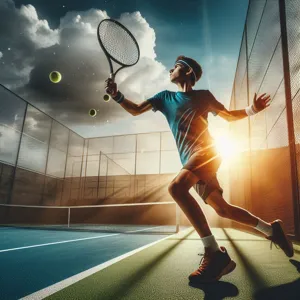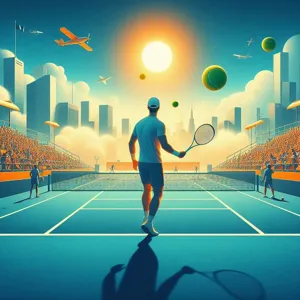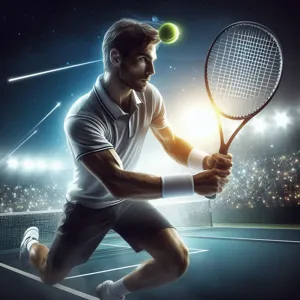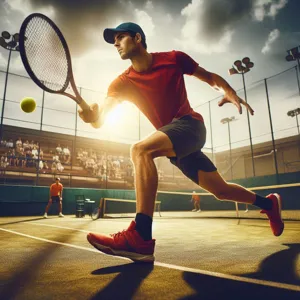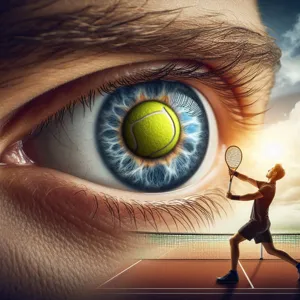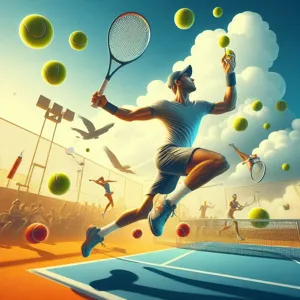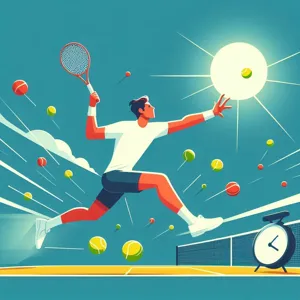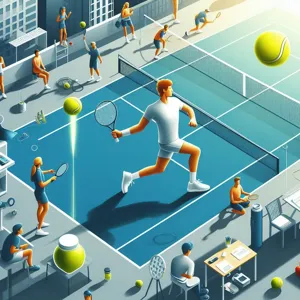In the world of golf, precision and performance are everything, and technology has stepped up to elevate your game to new heights.
Whether you’re a seasoned golfer looking to refine your swing or a novice eager to track your progress, the right tools can make all the difference. Enter the new wave of golf apps designed to help you swing into success by providing insights, statistics, and personalized coaching right at your fingertips. From GPS-enabled course guides to advanced swing analysis and community features that connect you with fellow golf enthusiasts, these apps are revolutionizing how players approach the game. In this blog post, we’ll explore the top golf apps that will not only help you monitor your performance but also enhance your overall golf experience, ensuring you play like a pro every time you hit the links. Get ready to take your game to the next level and enjoy the journey along the way!
1. Introduction: The Importance of Tracking Your Golf Game

Golf is more than just a sport; it’s a passion that demands precision, strategy, and continuous improvement. For enthusiasts and seasoned players alike, tracking your golf game is essential for unlocking your full potential on the course. In the age of technology, where data is king, leveraging the right golf apps can transform your game from casual play to a finely tuned performance.
Imagine standing on the tee box, armed with a wealth of information about your swing mechanics, putting stats, and course management strategies. Tracking your game allows you to analyze your performance, identify weaknesses, and celebrate your strengths. Whether you’re an amateur looking to lower your handicap or a weekend warrior striving for consistency, understanding your statistics is key to refining your skills.
Moreover, golf is a game of patience and practice, and keeping a detailed log of your rounds can help maintain motivation and focus. With apps that offer features such as shot tracking, round reviews, and even swing analysis, you can gain insight into every aspect of your game. These tools not only enhance your practice sessions but also provide valuable feedback to help you set realistic goals.
In this blog post, we’ll explore the top golf apps designed to help you track your game like a pro. Whether you want to analyze your performance, connect with fellow golfers, or engage in friendly competition, these apps are tailored to elevate your golfing experience. So grab your clubs, and let’s swing into success while ensuring every stroke counts!
2. Features to Look for in a Golf App
When it comes to choosing the right golf app to elevate your game, understanding the essential features is key to ensuring you maximize your practice sessions and on-course performance. Here are some must-have functionalities to look for:
**1. Shot Tracking:** The ability to track every shot is a fundamental feature that can provide invaluable insights into your game. Look for apps that allow you to log not only the distance and type of shot but also the location on the course. This data can help you identify patterns in your performance and areas needing improvement.
**2. GPS Functionality:** A reliable GPS feature is crucial for accurate distance measurement on the course. The best golf apps will offer detailed maps of the course layout, including hazards, greens, and fairways. This functionality helps you make informed decisions about club selection and strategy, ultimately improving your game.
**3. Performance Analysis:** Advanced analytics tools can take your game to the next level. Features that break down your performance statistics—like fairways hit, greens in regulation, and putting averages—allow you to pinpoint strengths and weaknesses. Some apps even provide personalized feedback based on your playing style, helping you to strategize effectively.
**4. Community Engagement:** Many golf apps now include social features that allow you to connect with other players. Whether it’s sharing your scores, competing in challenges, or discussing tips and tricks, engaging with a community can motivate you to improve and provide valuable insights from fellow golfers.
**5. Course Library:** A robust library of courses is essential for golfers who enjoy playing at different locations. Check if the app provides access to a wide range of local and international courses, complete with updates on changes or renovations. This feature ensures you have the right data at your fingertips, no matter where you play.
**6. User-Friendly Interface:** Finally, ease of use is paramount. A well-designed interface ensures you can quickly access features without fumbling through menus during your round. Look for apps that prioritize user experience, with intuitive navigation and clean layouts that allow you to focus on your game.
Choosing a golf app that encompasses these features can significantly enhance your golfing experience, helping you track your progress and ultimately swing into success!
3. Top Golf Apps Overview

In the digital age, tracking your golf game has never been easier or more effective. With numerous apps available at your fingertips, golfers of all skill levels can analyze their performance, strategize their play, and ultimately improve their game. Here’s a closer look at some of the top golf apps that have emerged as must-haves for both amateurs and seasoned pros alike.
1. **Golfshot**
Golfshot is a comprehensive app that offers GPS functionality, score tracking, and detailed statistics on your game. With its user-friendly interface, you can easily track your scores and stats over time to identify areas for improvement. Golfshot also provides real-time distance measurements and course information, making it an essential companion on the course. Plus, its integration with apple Watch allows you to keep your focus on the game without constantly checking your phone.
2. **Arccos Caddie**
Harnessing the power of artificial intelligence, Arccos Caddie stands out with its unique shot-tracking capabilities. By attaching sensors to your clubs, the app automatically records every shot you take, providing insightful analytics on your performance. The app can even offer personalized club recommendations and course strategy based on your playing style. With its in-depth analysis and smart recommendations, Arccos Caddie transforms the way golfers approach their game.
3. **18Birdies**
Designed as a social platform for golfers, 18Birdies goes beyond just tracking scores. The app features a robust GPS rangefinder, live scoring, and a comprehensive statistics tracker, but it also allows you to share your rounds with friends and connect with other golfers. With its engaging features like tournament play and challenges, 18Birdies makes tracking your game both fun and competitive.
4. **The Grint**
The Grint is an all-in-one app that combines score tracking, GPS, and a vibrant community of golfers. With its emphasis on connecting players, The Grint allows you to follow your friends’ scores, share your achievements, and even join tournaments. Its detailed performance analytics and easy-to-use interface make it a fantastic option for golfers looking to enhance their skills while enjoying a social experience.
5. **SwingU**
SwingU is a free golf GPS and score-tracking app that stands out for its simplicity and ease of use. It provides accurate GPS distances, score tracking, and basic stats without overwhelming users with too many features. For those who want a straightforward app that gets the job done without any fuss, SwingU is an excellent choice.
By utilizing these top golf apps, you can swing into success and track your game like a pro! Whether you’re looking for in-depth analytics, social connections, or simply a tool to measure your progress, these apps will help you elevate your golfing experience and make every round count.
4. 1. Golfshot: The All-in-One Golf GPS and Scoring App
When it comes to elevating your golf game, Golfshot stands out as a premier choice for both amateur and seasoned players alike. This all-in-one golf GPS and scoring app is designed to enhance your on-course experience by providing a comprehensive set of features that cater to every aspect of your game.
Upon launching Golfshot, users are greeted with an intuitive interface that is as user-friendly as it is functional. The app offers precise GPS distances to the front, middle, and back of the green, ensuring that you can make informed club selections for every shot. With over 45,000 courses loaded into its database, you can easily access detailed maps of courses around the globe, whether you’re playing your hometown favorite or exploring a new destination.
But Golfshot is not just about distance; it also excels in scoring and performance tracking. As you play, the app allows you to input your scores seamlessly, and it automatically calculates your handicap, providing you with a clear picture of your golfing prowess. The detailed statistics it gathers—such as fairways hit, greens in regulation, and putts per round—help you identify strengths and areas for improvement throughout your game.
One of the standout features of Golfshot is its integration with your favorite wearable devices. By syncing with smartwatches, you can keep track of your game without the need to pull out your phone, allowing you to stay focused on your swing and the course. Plus, the app’s voice-caddie feature provides audible distances and tips, giving you that professional touch right on the course.
With its combination of GPS functionality, detailed analytics, and user-friendly design, Golfshot truly empowers golfers to track their game like pros. Whether you’re a weekend warrior or aiming for a personal best, this app is an indispensable tool in your golfing arsenal, ensuring that you swing into success, one round at a time.
5. 2. Arccos Caddie: Smart Caddie Technology

When it comes to enhancing your golf game with cutting-edge technology, **Arccos Caddie** stands out as a top contender. This innovative app utilizes smart caddie technology to provide golfers with insights that were once only accessible to professional players. With a sleek and user-friendly interface, Arccos Caddie seamlessly integrates with your game, offering real-time data and analytics that help you understand your strengths and identify areas for improvement.
One of the app’s standout features is its automatic shot tracking. By simply attaching small sensors to the grips of your clubs, Arccos records every swing you make. It’s like having a personal caddie in your pocket, tirelessly gathering data on your performance throughout the course. This information is then analyzed and presented in a comprehensive dashboard, showcasing key metrics such as distance, accuracy, and even your scoring tendencies.
Arccos Caddie goes beyond just tracking your shots; it also offers AI-powered club recommendations based on your unique playing style and the specific conditions of the course you’re tackling. Imagine stepping up to the tee and having the app suggest the optimal club to use based on historical data and current environmental factors like wind speed and temperature. This personalized approach empowers you to make strategic decisions that can dramatically enhance your gameplay.
Additionally, the app features a robust course database, giving you access to thousands of golf courses worldwide. With detailed maps and information about each course, you can prepare for your round by reviewing layouts, hazards, and green conditions ahead of time. By having this wealth of knowledge at your fingertips, you can play with confidence and make informed choices that elevate your performance.
In a world where every stroke counts, **Arccos Caddie** is the smart companion that not only tracks your game but also transforms the way you play. By leveraging this technology, you’ll be well on your way to swinging into success and achieving your golfing goals like a pro!
6. 3. 18Birdies: Social Features and Game Tracking
When it comes to enhancing your golfing experience, **18Birdies** stands out as a comprehensive app that combines robust game tracking with engaging social features. Whether you’re a seasoned pro or a weekend warrior, this app has something to offer for every golfer looking to elevate their game.
At its core, 18Birdies allows you to meticulously track your scores, stats, and progress. The intuitive interface lets you input your scores hole by hole, providing detailed insights into your performance over time. You can monitor vital statistics like fairways hit, greens in regulation, and putts per round, which can help you identify areas for improvement. The app even includes a GPS feature that gives you accurate distance measurements to the pin and hazards, ensuring you make informed decisions on the course.
What truly sets 18Birdies apart, however, is its vibrant social aspect. The app encourages golfers to connect with friends, share their achievements, and even challenge each other to friendly competitions. You can create or join groups, post updates about your rounds, and share photos, making it a perfect platform for fostering camaraderie among fellow golf enthusiasts. The community-driven approach allows users to learn from one another, as they share tips, tricks, and personal bests.
Moreover, 18Birdies offers a unique feature called “The Clubhouse,” a hub for social interaction where you can find local events, tournaments, and even special promotions from golf courses. This feature not only keeps you engaged with the sport but also helps you discover new opportunities to play and improve your skills.
With its combination of game tracking and social connectivity, 18Birdies is an essential tool for any golfer aiming to swing into success. Whether you’re looking to refine your technique or simply enjoy a round with friends, this app will keep you motivated and connected to the world of golf like never before.
7. 4. SwingU: Performance Tracking and Personalized Coaching

When it comes to elevating your golf game, **SwingU** stands out as a powerful ally for both amateurs and seasoned players alike. This innovative app goes beyond mere scorekeeping; it offers comprehensive performance tracking and personalized coaching tailored to your unique playing style.
Upon downloading SwingU, users are greeted with a sleek, user-friendly interface that seamlessly integrates with your golfing experience. One of its standout features is the ability to log every shot, providing detailed analytics on your driving distance, approach accuracy, and putting efficiency. The app’s GPS functionality delivers precise yardages to the green and hazards, ensuring that you make informed decisions on the course.
But what truly sets SwingU apart is its personalized coaching capabilities. The app analyzes your performance data and offers targeted drills and tips designed to address your specific weaknesses. Whether it’s adjusting your grip, refining your swing mechanics, or improving your short game, SwingU provides actionable insights that empower you to make tangible improvements.
Moreover, the app includes a built-in community feature, allowing you to connect with fellow golfers, share your progress, and even take part in challenges that keep your competitive spirit alive. With SwingU, you aren’t just tracking your game; you’re embarking on a journey of continuous improvement, all while having fun on the green. Swing into action with SwingU, and watch your skills transform as you play your way to success!
8. 5. MyRoundPro: Analyzing Your Game Progress
When it comes to tracking your golf performance with precision, **MyRoundPro** stands out as an exceptional tool in the digital golf landscape. Designed for avid golfers who want to take their game to the next level, this app offers a comprehensive suite of features to analyze your progress and refine your skills.
Upon logging in, users can effortlessly input their rounds, recording not just scores but also detailed statistics on fairways hit, greens in regulation, and putts per round. What sets MyRoundPro apart is its ability to break down your game into digestible insights. The app generates detailed reports that highlight areas of strength and pinpoint aspects that may need improvement. For instance, you might discover that while your driving distance is impressive, your short game could benefit from additional practice.
In addition to personal analytics, MyRoundPro connects you with a community of golfers and provides access to a wealth of instructional resources tailored to your specific needs. Imagine receiving tailored tips based on your playing history or accessing drills designed to help improve your weak spots. The app even allows you to track your progress over time, ensuring you stay motivated as you see tangible improvements in your game.
Furthermore, MyRoundPro’s integration with various course maps simplifies the process of understanding how each hole plays out, allowing you to strategize effectively before stepping onto the green. This level of detail fosters a deeper connection with the game, enhancing not only your skills but also your enjoyment of each round.
Whether you’re a seasoned pro or just starting out, MyRoundPro is your partner in progress, providing the data-driven insights you need to swing into success and truly play like a pro!
9. 6. GolfLogix: Course Mapping and Yardage Information
When it comes to mastering the intricacies of the golf course, GolfLogix stands out as an essential tool for any serious golfer. This app is a game-changer, offering comprehensive course mapping and precise yardage information that can significantly enhance your gameplay. Imagine stepping onto the tee box, armed with detailed 3D maps of the course that highlight every nuance of the layout—from the steepest slopes to the most challenging hazards.
GolfLogix provides users with GPS-based yardage to greens, hazards, and other critical points, allowing you to make informed decisions before every shot. No longer will you have to rely on guesswork or the vague distances provided by course markers; with GolfLogix, you’ll know exactly how far you are from your target, enabling better club selection and shot execution.
In addition to its impressive mapping capabilities, GolfLogix features an interactive scorecard that allows you to track your performance hole by hole, providing insights into your strengths and areas for improvement. The app’s statistics tracking functionality can help you analyze your game over time, making it easier to identify trends in your performance and set realistic goals for improvement.
With regular updates and an extensive database of courses, GolfLogix ensures that you’ll have the latest information at your fingertips, whether you’re playing a local favorite or exploring new links halfway across the country. Overall, GolfLogix is not just an app; it’s your personal caddy, guiding you to swing into success with every round. If you’re looking to elevate your game and navigate the fairways with confidence, this is the app that will help you tee off like a pro!
10. 7. TheGrint: Community Features and Stat Tracking
When it comes to enhancing your golf experience, **TheGrint** stands out as a powerhouse among golf apps, particularly for those who thrive on community engagement and detailed stat tracking. This app isn’t just about logging your scores; it’s a comprehensive platform that connects golfers from all walks of life, fostering a sense of camaraderie on and off the course.
One of the most appealing features of TheGrint is its vibrant community aspect. Users can connect with fellow golfers, share their achievements, and even challenge friends to friendly competitions. The app allows you to set up groups, making it easy to organize rounds with your golf buddies, track your collective progress, and motivate each other to improve your game. This social element not only adds a layer of fun but also encourages accountability, pushing you to hit the greens more often.
In addition to community features, TheGrint excels at stat tracking. The app provides a wealth of analytics that enable you to dive deep into your performance. From tracking your fairways hit and greens in regulation to analyzing your putting statistics, TheGrint offers a comprehensive overview of your game. These insights can help you identify strengths and weaknesses, allowing you to focus your practice sessions on the areas that need the most improvement.
TheGrint also integrates GPS features, giving you accurate distance measurements on the course, which is invaluable for making strategic decisions during your rounds. Plus, with its ability to maintain a digital scorecard, you’ll never have to worry about losing paper scorecards again.
By combining community engagement with powerful stat-tracking capabilities, TheGrint not only enhances your golfing experience but also empowers you to swing into success like a pro. Whether you’re a seasoned golfer looking to refine your skills or a newcomer eager to learn, this app is an essential companion on your journey to becoming a better player.
11. 8. Shot Scope: GPS and Automatic Shot Tracking
When it comes to enhancing your golf game, Shot Scope stands out as a revolutionary tool that combines cutting-edge GPS technology with automatic shot tracking to elevate your performance on the course. This app is perfect for golfers who are serious about analyzing their gameplay and seeking to improve their skills like a pro.
With Shot Scope, you can enjoy real-time GPS distances to the greens and hazards, ensuring that you always have the information you need at your fingertips. This feature allows you to make informed decisions on club selection and shot strategy, helping you navigate the course with confidence.
What sets Shot Scope apart is its impressive automatic shot tracking capability. By simply wearing a lightweight wristband during your rounds, the app automatically records every shot you take without the need for manual input. This means you can focus on your game rather than worrying about keeping track of your statistics. After your round, the data is seamlessly synced to your smartphone, where you can review detailed insights into your performance, including shot distances, accuracy, and even your tendencies on specific holes.
The comprehensive analytics provided by Shot Scope are invaluable for identifying areas of strength and opportunities for improvement. Whether you’re working on your driving accuracy, putting skills, or overall course management, the app offers personalized insights that can help you set achievable goals and track your progress over time.
In addition to its tracking features, Shot Scope fosters a community of golfers where you can share your achievements, compare statistics with friends, and participate in challenges to keep your game competitive. This social aspect adds an extra layer of motivation, making your golfing experience not just about personal improvement, but also about connecting with fellow enthusiasts.
In summary, if you’re looking to take your golf game to the next level, Shot Scope is an indispensable tool that combines GPS capabilities and automatic shot tracking for a comprehensive understanding of your performance. Embrace the technology, analyze your game, and watch as your skills soar to new heights!
12. 9. GolfNow: Tee Time Booking and Course Reviews
GolfNow stands out as a premier app for golfers looking to streamline their tee time booking and access comprehensive course reviews. With a user-friendly interface, GolfNow allows players to easily search for available tee times at thousands of golf courses across the globe. Whether you’re planning a spontaneous weekend round or scheduling a trip to a dream destination, the app provides real-time availability, making it simple to secure your spot on the green.
But GolfNow offers much more than just tee time reservations. The app is a treasure trove of course reviews and ratings, sourced from a community of avid golfers who share their experiences on various courses. This feature enables you to discover hidden gems and popular favorites alike, ensuring you choose a venue that meets your expectations. From the layout and difficulty of the course to the condition of the greens and overall ambiance, these insights can help you make informed decisions about where to play.
Additionally, GolfNow often features exclusive deals and discounts, allowing you to save money while enjoying your favorite pastime. With the ability to filter courses by price, difficulty level, and user ratings, planning your next golf outing has never been easier. Plus, the app’s integration with GPS technology provides accurate distance measurements and shot tracking, elevating your game to the next level.
In a nutshell, GolfNow is not just an app; it’s a golfer’s companion, perfect for anyone looking to enhance their golfing experience, book tee times with ease, and connect with fellow golf enthusiasts. For those eager to swing into success, downloading GolfNow is a step in the right direction.
13. 10. Zepp Golf: Swing Analysis and Improvement
When it comes to taking your golf game to the next level, Zepp Golf stands out as a powerful tool for swing analysis and improvement. This innovative app combines cutting-edge technology with user-friendly features, making it an essential companion for golfers of all skill levels.
Zepp Golf utilizes a small, lightweight sensor that easily attaches to your golf glove, capturing every nuance of your swing in real-time. Once you’ve swung your club, the app analyzes your performance, providing detailed insights into key metrics such as swing speed, tempo, club path, and face angle. This data is invaluable for identifying areas for improvement and refining your technique.
But the benefits don’t stop there. Zepp Golf also offers personalized training recommendations tailored to your specific needs. With an extensive library of instructional videos and drills, you can immerse yourself in targeted practices designed to enhance your overall performance. The app even allows you to track your progress over time, giving you a comprehensive view of your development as a player.
Additionally, the social features of Zepp Golf allow you to connect with friends and fellow golfers. You can share your progress, challenge each other, and even compare your swings, fostering a sense of community and motivation. The visually appealing interface makes it easy to navigate through your statistics and insights, ensuring you stay engaged as you work towards your golfing goals.
In a sport where precision and technique matter, Zepp Golf offers a unique blend of technology and education that empowers you to swing with confidence and improve your game like a pro. Whether you’re looking to shave strokes off your score or simply enjoy the game more, Zepp Golf is a game-changer that should not be overlooked.
14. Tips for Maximizing Your Use of Golf Apps
Golf apps have revolutionized the way players of all skill levels approach the game, offering tools to analyze performance, track statistics, and even connect with fellow golfers. However, to truly swing into success, it’s essential to maximize the potential of these digital resources. Here are some tips to help you get the most out of your golf app experience.
**1. Set Clear Goals:** Start by identifying what you want to achieve. Are you looking to lower your handicap, improve your putting, or simply track your rounds more effectively? Setting specific, measurable goals can help you focus your efforts and use the app’s features more effectively.
**2. Log Every Round:** Consistency is key in golf, and the same goes for using an app. Make it a habit to log every round you play. This not only helps you track your progress over time but also allows the app to offer personalized insights and recommendations based on your performance data.
**3. Take Advantage of Analytics:** Most golf apps provide in-depth analytics of your game, from driving distance to putts per round. Spend time reviewing these statistics regularly. Look for patterns in your performance: Are you consistently missing putts to the left? Is your short game lagging? Understanding these nuances can guide your practice sessions.
**4. Engage with the Community:** Many golf apps feature social elements, allowing you to connect with friends or find new playing partners. Engaging with the community can provide motivation, tips, and even friendly competition. Share your achievements, challenge others, or join local tournaments to enhance your experience.
**5. Use the GPS Features:** If your app offers GPS capabilities, make sure to utilize them. Knowing the exact distance to the pin or hazards can greatly influence your club selection and strategy on the course. Familiarize yourself with the course layout and practice reading the greens more effectively using the app’s maps.
**6. Integrate with Wearable Devices:** If you own a smartwatch or fitness tracker, consider integrating it with your golf app. This added functionality can help you monitor not only your performance on the course but also your overall fitness. Track your steps, heart rate, and calories burned during a round for a comprehensive view of your game and health.
**7. Regularly Update Your App:** Finally, ensure your app is always updated to the latest version. Developers frequently release updates that enhance functionality, fix bugs, and add new features. Staying current can prevent issues and provide you with the best tools to aid your game.
By implementing these tips, you can elevate your golfing experience and truly harness the power of technology to improve your game. Remember, the journey to becoming a better golfer is a marathon, not a sprint, so take advantage of every tool at your disposal and enjoy the process!
15. Conclusion: Elevate Your Game with the Right Tools
In conclusion, the journey to becoming a better golfer is not solely about mastering your swing or perfecting your putt; it’s also about leveraging the right tools to enhance your game. The golf apps we’ve explored throughout this post serve as invaluable companions on your path to improvement. By offering features such as shot tracking, swing analysis, and detailed performance metrics, these apps provide insights that can transform your practice sessions and on-course strategies.
Imagine walking onto the green armed with data-driven knowledge about your strengths and weaknesses, enabling you to make informed decisions that lead to better scores. Whether you’re a seasoned pro or just starting, these apps can help you set realistic goals, stay motivated, and track your progress over time.
Moreover, they connect you with a community of fellow golfers, allowing for shared tips, challenges, and camaraderie. As you embrace technology in your golf journey, remember that each swing is an opportunity for growth and learning. So download one or more of these top golf apps, and swing into success—your best game awaits!
In conclusion, elevating your golf game has never been easier with the right technology at your fingertips. The golf apps we’ve explored in this post provide invaluable tools to track your performance, analyze your swings, and refine your skills—transforming every round into an opportunity for improvement. Whether you’re a seasoned pro or just starting out, these apps empower you to approach the course with confidence and precision. So, grab your clubs, download your favorite app, and get ready to swing into success! We’d love to hear about your experiences with these apps and any additional tips you might have, so feel free to share in the comments below. Here’s to lower scores and a more enjoyable game!



















